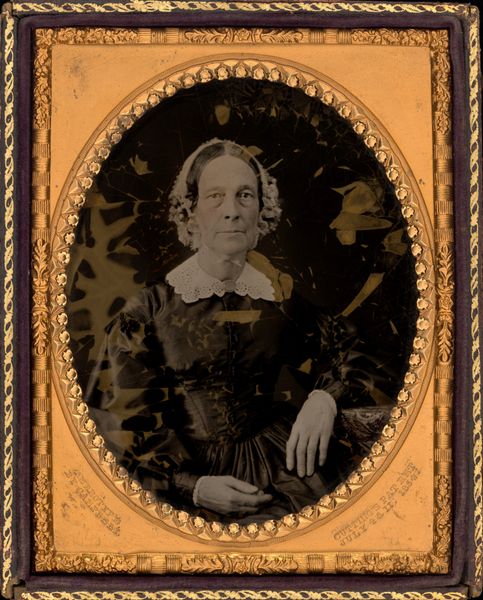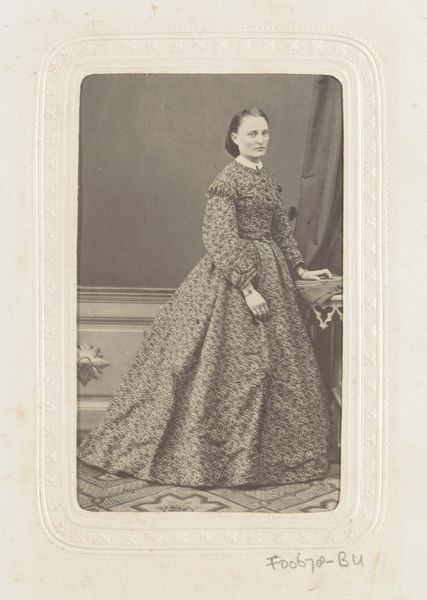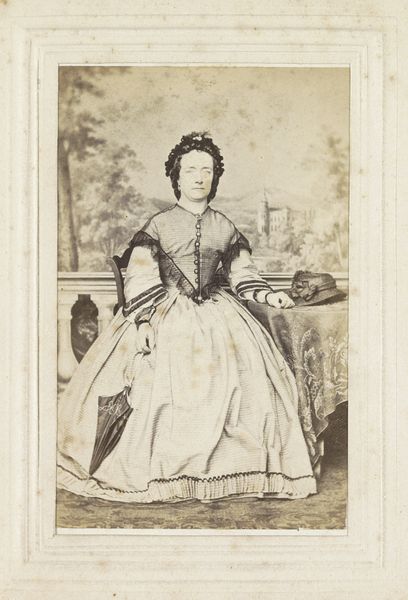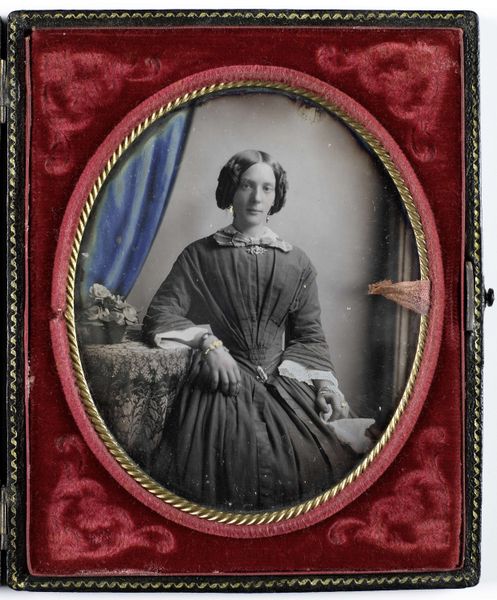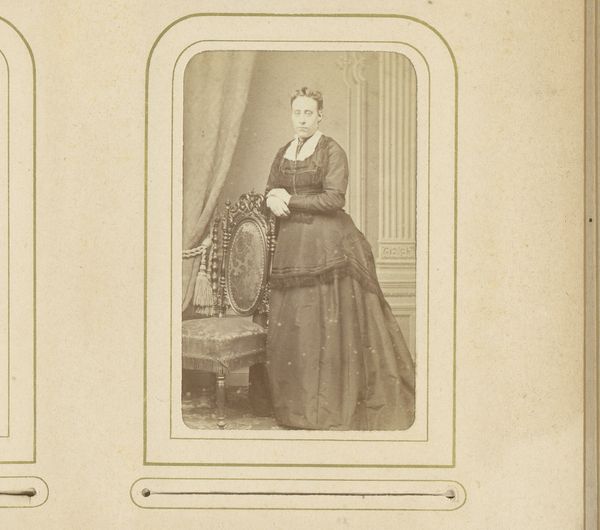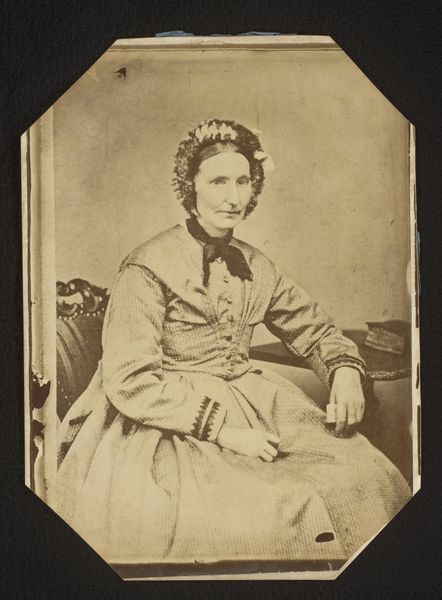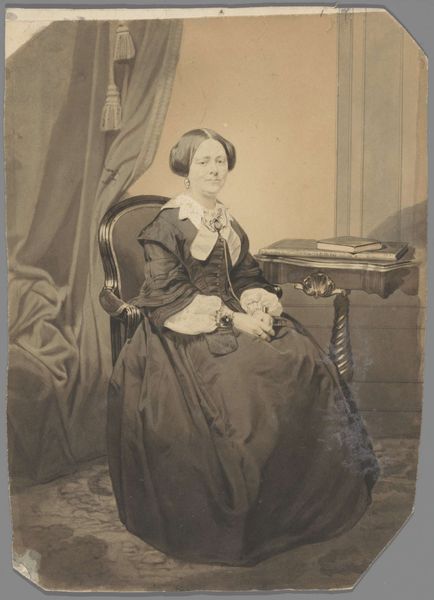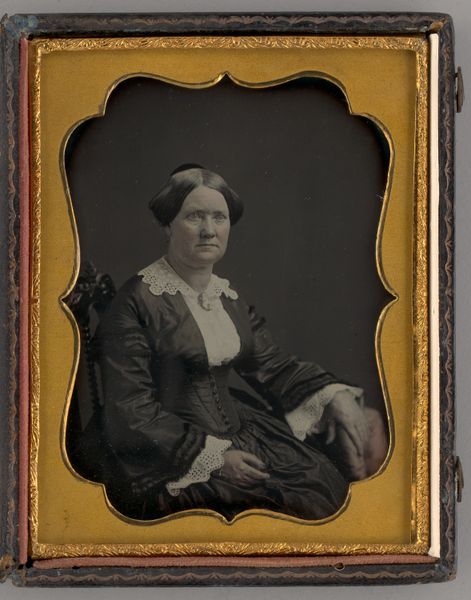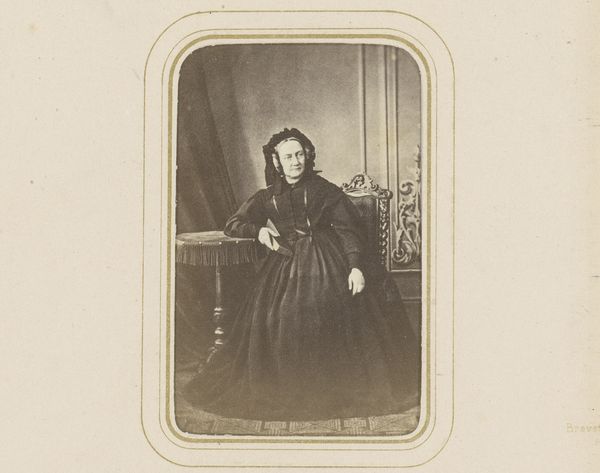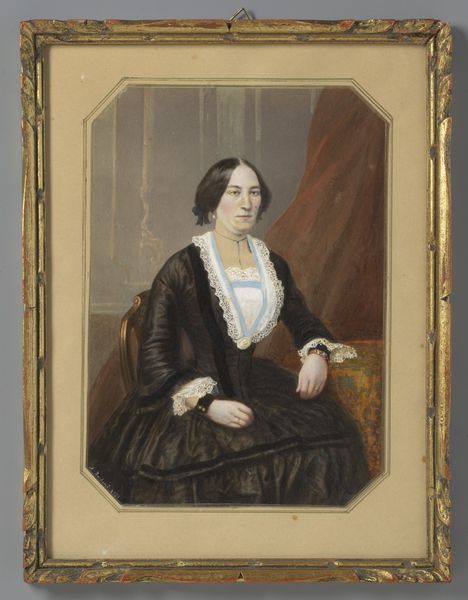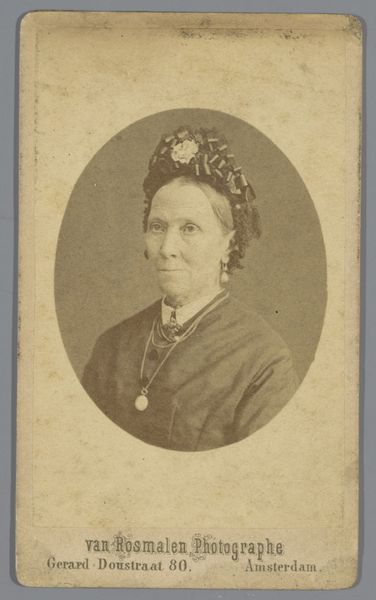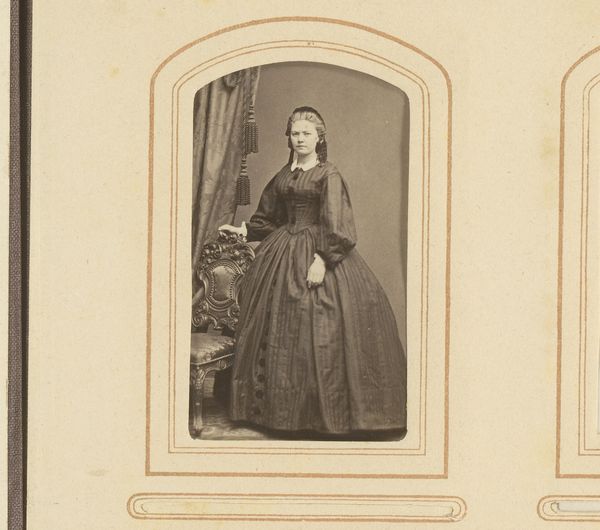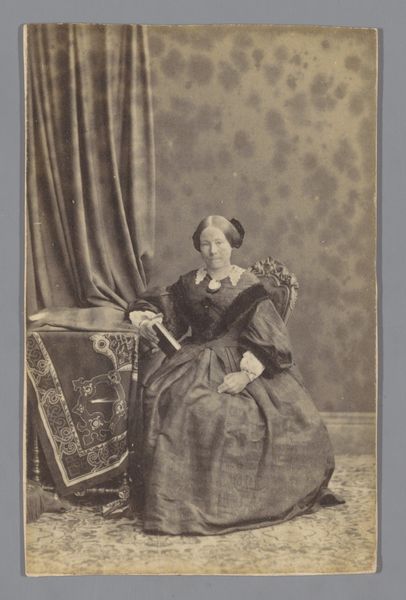
daguerreotype, photography
#
portrait
#
daguerreotype
#
photography
#
historical photography
#
19th century
#
academic-art
Dimensions: image/sheet: 20.3 × 15 cm (8 × 5 7/8 in.) mount: 25.5 × 20.2 cm (10 1/16 × 7 15/16 in.)
Copyright: National Gallery of Art: CC0 1.0
Editor: This daguerreotype, "Sophie Hartman," was created around the 1860s by George D. Wise. The portrait has a rather formal, almost austere quality to it. What stands out to you when you look at it? Curator: The most striking thing is how much symbolism a seemingly simple portrait holds. Notice the red curtain. Throughout art history, red drapery has signified power, status, and even sacrifice. Do you see how its placement positions the subject in a specific socio-economic class? Editor: Yes, definitely. And the ornate chair she's sitting in reinforces that. But it's also a photographic image, a relatively new technology then. Does that affect the reading of symbols in any way? Curator: Absolutely. The emerging medium of photography aimed to capture realism, yet portraiture still clung to established visual languages. The artist utilizes this contrast to project not just likeness but also character and societal role. Look closely, what about the flowers in her hair, what message could they convey? Editor: Perhaps they soften the image, a sign of femininity within those social constraints? It’s interesting how so much meaning can be layered into one image like this. Curator: Exactly. Every element—clothing, pose, backdrop—contributes to the narrative the artist is trying to construct. Recognizing those visual cues offers us a window into the past and allows us to understand what values they revered and conveyed. Editor: I will never look at portraits the same way. It shows me just how potent these visual symbols really are!
Comments
No comments
Be the first to comment and join the conversation on the ultimate creative platform.
